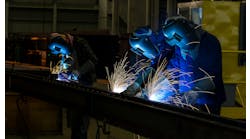The traditional arguments against offshoring the manufacturing of a product tend to be incomplete, unconvincing proposals. Two examples: First, if the logistics problems aren't enough to discourage offshoring, nix the idea by updating your production-floor capabilities. Hardly rigorous, both considerations fall short of the needed comprehensive analysis, asserts Nicholas P. Dewhurst, executive vice president, Boothroyd Dewhurst Inc., Wakefield, R.I. He documents his view with a study co-authored with consultant David G. Meeker, Neoteric Product Development, Acton, Mass. They begin by elaborating on the hidden risks of offshoring -- which can boost overall cost by as much as 24%, but the study's title emphasizes a "made in the U.S.A." solution: "Improving Product Design Practices Would Make U.S. Manufacturing More Cost Effective." The authors argue that U.S. companies should do a much better job of integrating cost analysis into product design. If rigorous cost analysis would be instituted as a foundation for product design, U.S. manufacturers would be able to develop innovative products that are more economical to produce in the U.S. The cost connection with manufacturing is not unknown to engineers who have long understood that the design function controls as much as 80% of manufacturing cost, Meeker says. What it does suggest, adds Dewhurst, is that functional integration and collaboration are still goals for organizations. He says functional barriers persist. "Companies historically do a poor job of integrating cost analysis into early product design. Many companies now rushing to outsource manufacturing still do not understand that the design of the product determines the final cost." As a developer of Design for Manufacture and Assembly (DFMA) software, Boothroyd Dewhurst documents the study with a customer example from Milwaukee Electric Tool Corp., Brockfield, Wis. By redesigning the product, an electric drill, the company was able to show that making the unit in China would actually increase costs. Dewhurst cites impressive potential for looking for manufacturing cost reduction via DFMA optimization. A two-decade user survey revealed average reductions of 60% in assembly time, 63% in manufacturing cycle time and 50% in overall product cost. How can offshoring work best? When the strategy is to locate manufacturing adjacent to customers, says Dewhurst.
Popular Sponsored Recommendations
Popular Sponsored Recommendations
Voice your opinion!
Voice your opinion!
To join the conversation, and become an exclusive member of IndustryWeek, create an account today!
Members Only Content
Members Only Content
Members Only Content
Sponsored
Sponsored


